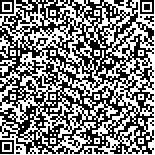| 摘要: |
| 新时期构建中华优秀传统文化传承
体系背景下,单一对遗存本体的展示方式难
以发挥文化传播的作用。文章在解析文化遗
产展示利用与文化传播在时间、空间、社会
维度耦合特征基础上,对传统展示阐释手段
进行审视与反思。进而借鉴传播学相关理论
方法从文化源、文化传播场、传播者、传播
手段、受众等要素入手构建展示阐释框架,
以海龙屯为案例在展示阐释思路、展示方
式、展示产品体系设计等方面结合文化传播
特征进行创新。本文旨在提出一种新的文化
遗产展示阐释方式,促进文化遗产的保护、
传承和活化利用。 |
| 关键词: 世界文化遗产 文化传播 展示阐
释 体系建构 海龙屯 |
| DOI:10.13791/j.cnki.hsfwest.20240401002 |
| 分类号: |
| 基金项目:国家自然科学基金项目(52468005);贵州省科技计划项目(ZK[2023]061);贵州大学人文社科课题(GDYB2022001) |
|
| Construction of display and interpretation system for cultural heritage from the perspectiveof communication: A case study on Hailongtun Site |
|
WU Chong,ZHANG Hao,SHUI Yue,CHEN Xianzhong
|
| Abstract: |
| In the era of constructing an inheritance system for excellent traditional Chinese culture, the
display and interpretation of cultural heritage are confronted with unprecedented opportunities and
challenges. The traditional approach to displaying cultural heritage, which primarily centers on the
protection and presentation of material remnants, often fails to fully actualize its potential in cultural
dissemination. This is particularly evident in contemporary society, where the diversifying demands of
audiences for the interpretation of cultural heritage have outpaced the capabilities of traditional display
methods. These methods frequently neglect the interactivity, participatory sense, and experiential aspects
of cultural heritage, resulting in a superficial grasp of its significance by the audience. Consequently, the
innovation of display and interpretation modalities to better safeguard, inherit, and revitalize cultural
heritage has emerged as a pivotal issue in contemporary cultural heritage research. This paper introduces
a framework for the display and interpretation of cultural heritage, grounded in cultural communication
theory, with a focus on the world cultural heritage site of Hailongtun in Zunyi as a case study. It dissects
the coupling characteristics of cultural heritage display and dissemination across temporal, spatial, and
social dimensions, advocating for a paradigm shift that transcends traditional material ontology displays
to emphasize the multidimensional transmission of cultural connotations and interactive audience
experiences. The paper commences with a critical review of the limitations inherent in traditional cultural
heritage display methods, which are characterized by unidirectional information transfer, a narrow scope
of display content, and a paucity of audience engagement. These methods often overlook the dynamic,
disseminative, and timely nature of culture, rendering them inadequate for meeting the multi-tiered
interpretation demands of modern society for cultural heritage. The paper, therefore, proposes that the
display and interpretation of cultural heritage should surpass the confines of material ontology, enrich the
cultural connotations conveyed by heritage through the synthesis of temporal and spatial dimensions, and
leverage modern communication methods to foster the comprehensive dissemination of cultural
information. Underpinned by this theoretical framework, the paper constructs a comprehensive display
and interpretation system that encompasses cultural sources, communication fields, communicators,
communication methods, and audiences. Cultural sources should not be limited to the historical culture
embodied by the remains themselves but should also include the reinterpretation of heritage and its
applied value in contemporary society, such as its roles in education, scientific research, and ecological
protection. The communication field, serving as the spatial medium for cultural dissemination, should
encompass both traditional physical spaces and virtual spaces crafted through digital technologies, with a
focus on the seamless integration of history and modernity, nature and artificial environments, to
augment the effectiveness and participation in cultural dissemination. The paper also underscores the
pivotal role of local community residents as communicators, actively involved in the transmission and
interaction of cultural information. By critically evaluating Hailongtun's current display methods, the
paper identifies issues such as singular display content, poor interactivity, and insufficient audienceparticipation. It proposes innovative strategies, including the enhancement of cultural connotations through digital technology and the design of immersive
interactive experience activities utilizing virtual reality and augmented reality, to bolster audience participation and comprehension. Furthermore, it suggests the
provision of diversified display content and forms to better address the cultural cognition and experiential needs of diverse audience groups. Building upon these
innovative strategies, the paper posits that the display of cultural heritage is not merely a conduit for transmitting cultural information but also a crucible for cultural
regeneration. In this process, the audience should evolve from passive recipients to active participants and cultural creators. Through a variety of interactive display
methods, audiences can attain a deeper understanding and identification with cultural heritage, thereby fostering its inheritance and constructing cultural confidence.
In summary, the paper proposes a more open, interactive, and diversified model for the display of cultural heritage from the perspective of communication studies.
This model emphasizes the in-depth exploration of cultural sources, the flexible design of communication venues, the innovative application of communication
methods, and the precise response to audience needs. It does not only enrich the connotation of cultural heritage display but also significantly enhance audience
cognition and emotional identification, thereby promoting the effective protection and global dissemination of cultural heritage. The implications of this approach are
far-reaching, as it does not only transform the way we perceive and engage with cultural heritage but also contribute to the revitalization of cultural practices and the
enhancement of cultural confidence. By embracing a communicative and participatory approach to the display and interpretation of cultural heritage, we can ensure
that these invaluable assets are not only preserved but also brought to life, allowing them to resonate with contemporary audiences and future generations. This
approach also aligns with the United Nations Educational, Scientific and Cultural Organization’s (UNESCO) efforts to promote cultural diversity and heritage
preservation, underscoring the global relevance and importance of such initiatives. |
| Key words: world cultural heritage cultural communication site display system construction Hailongtun |


